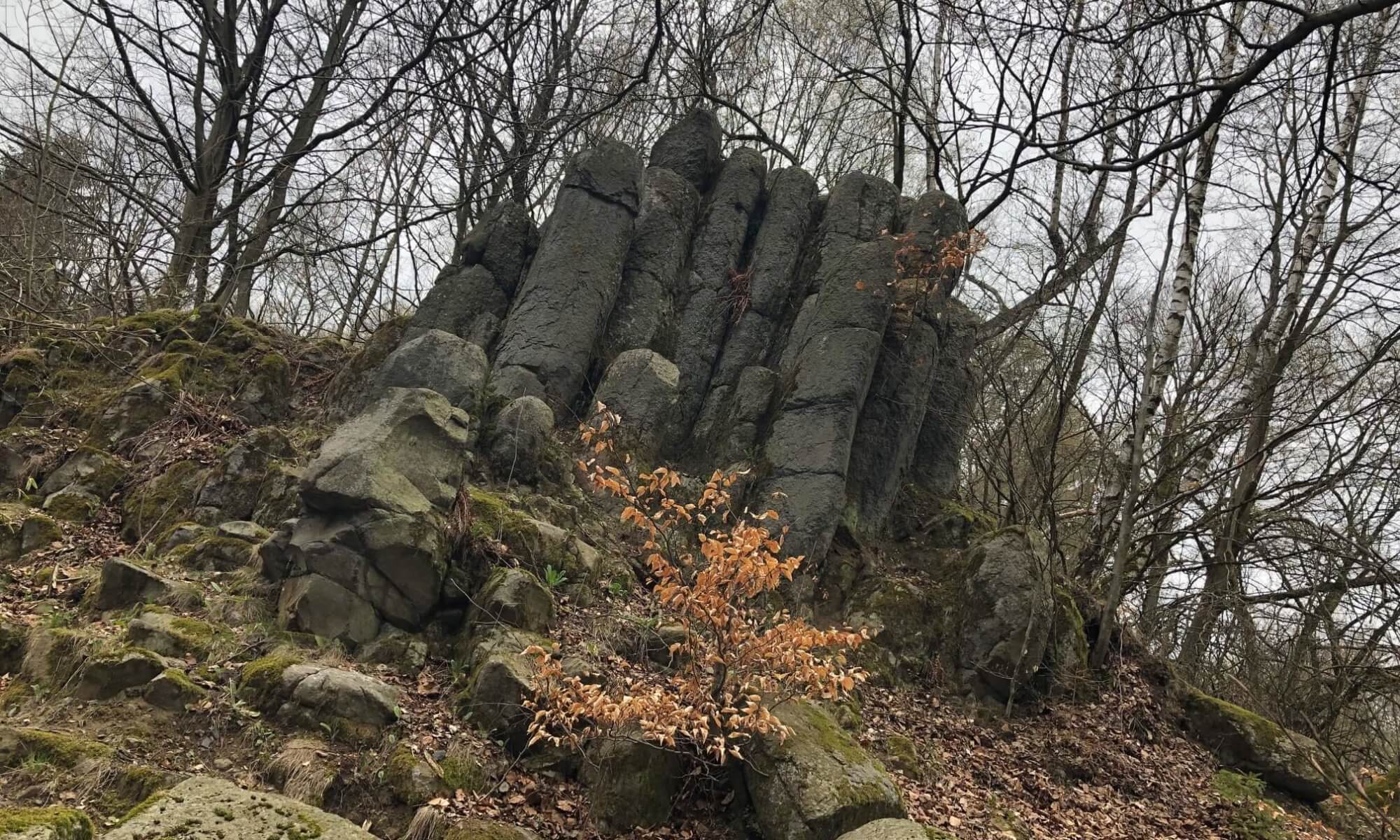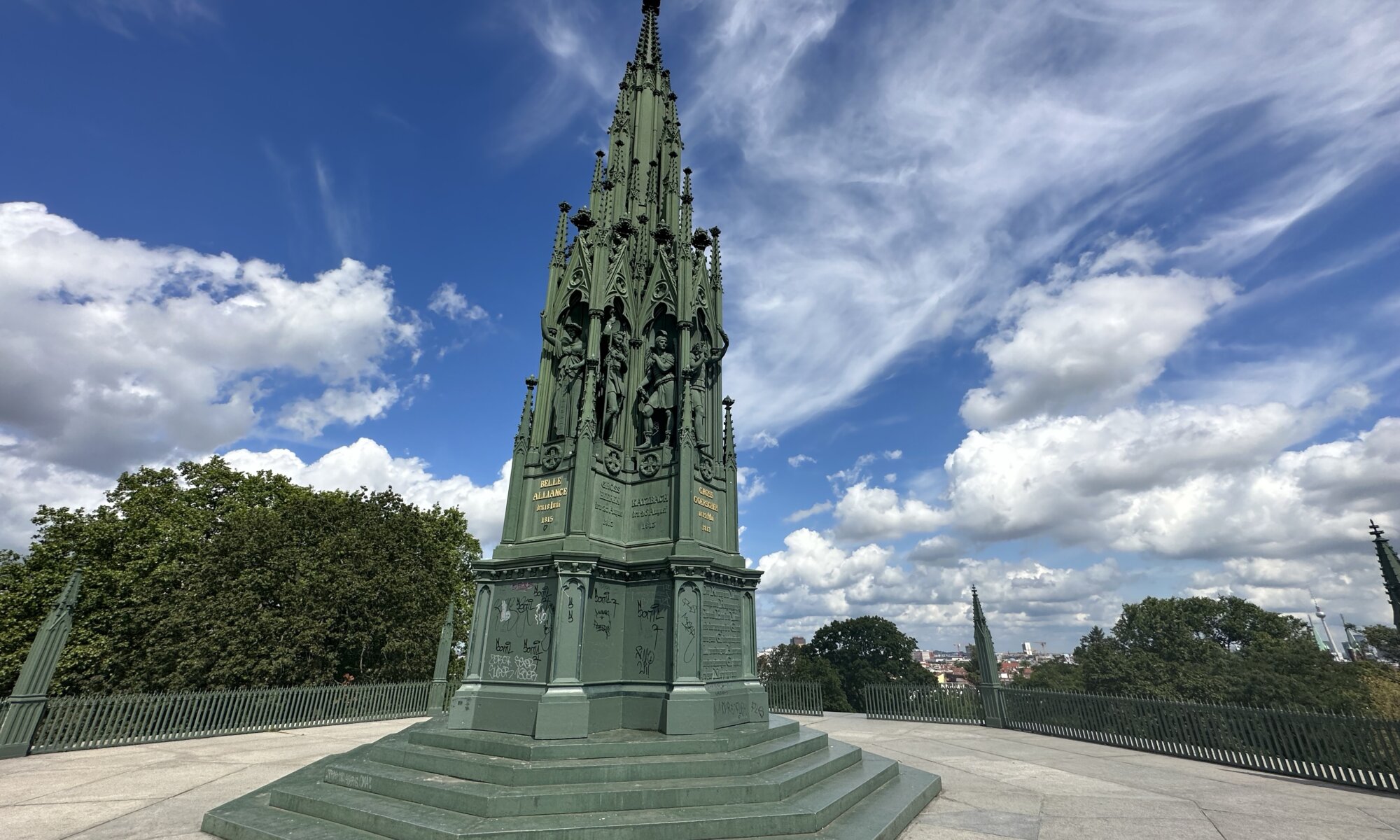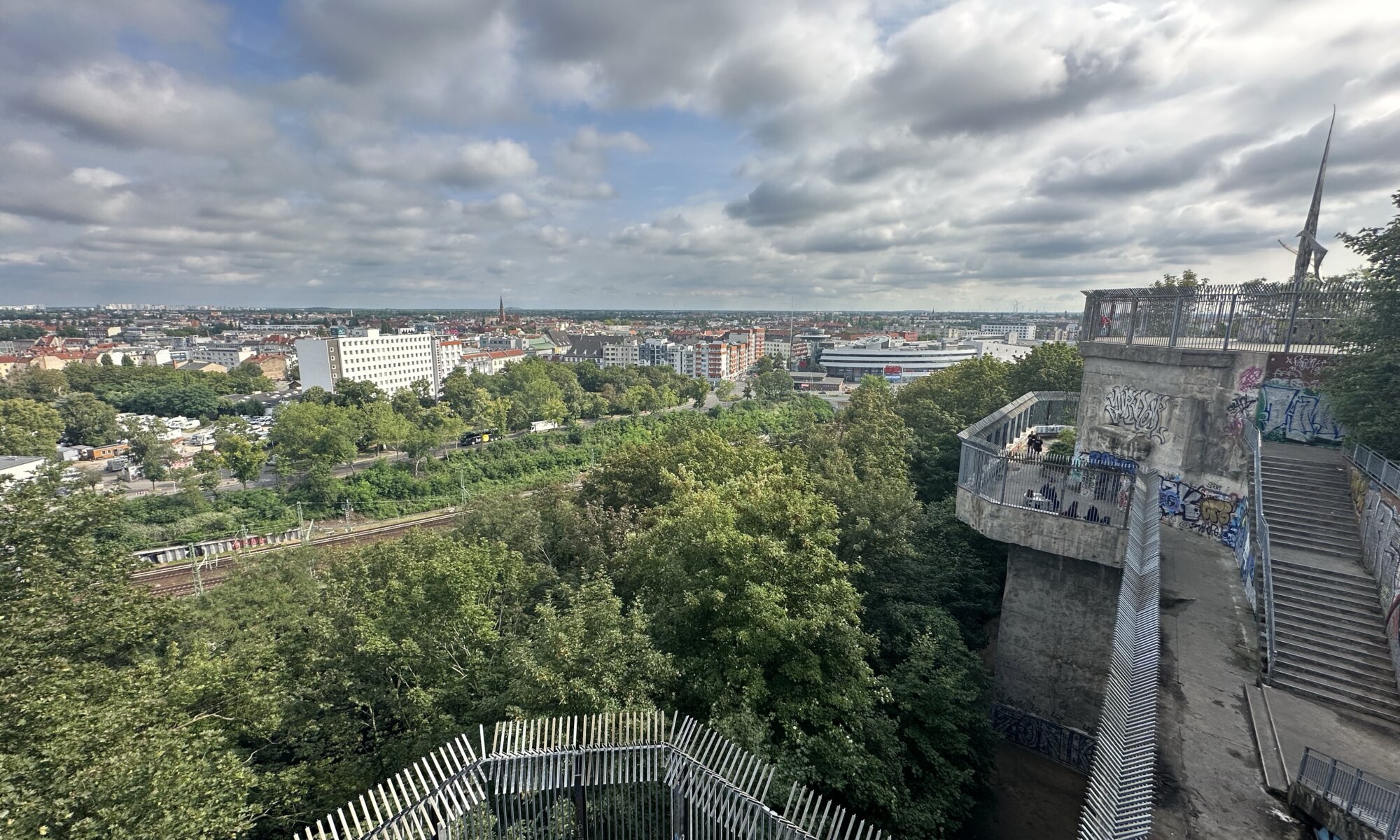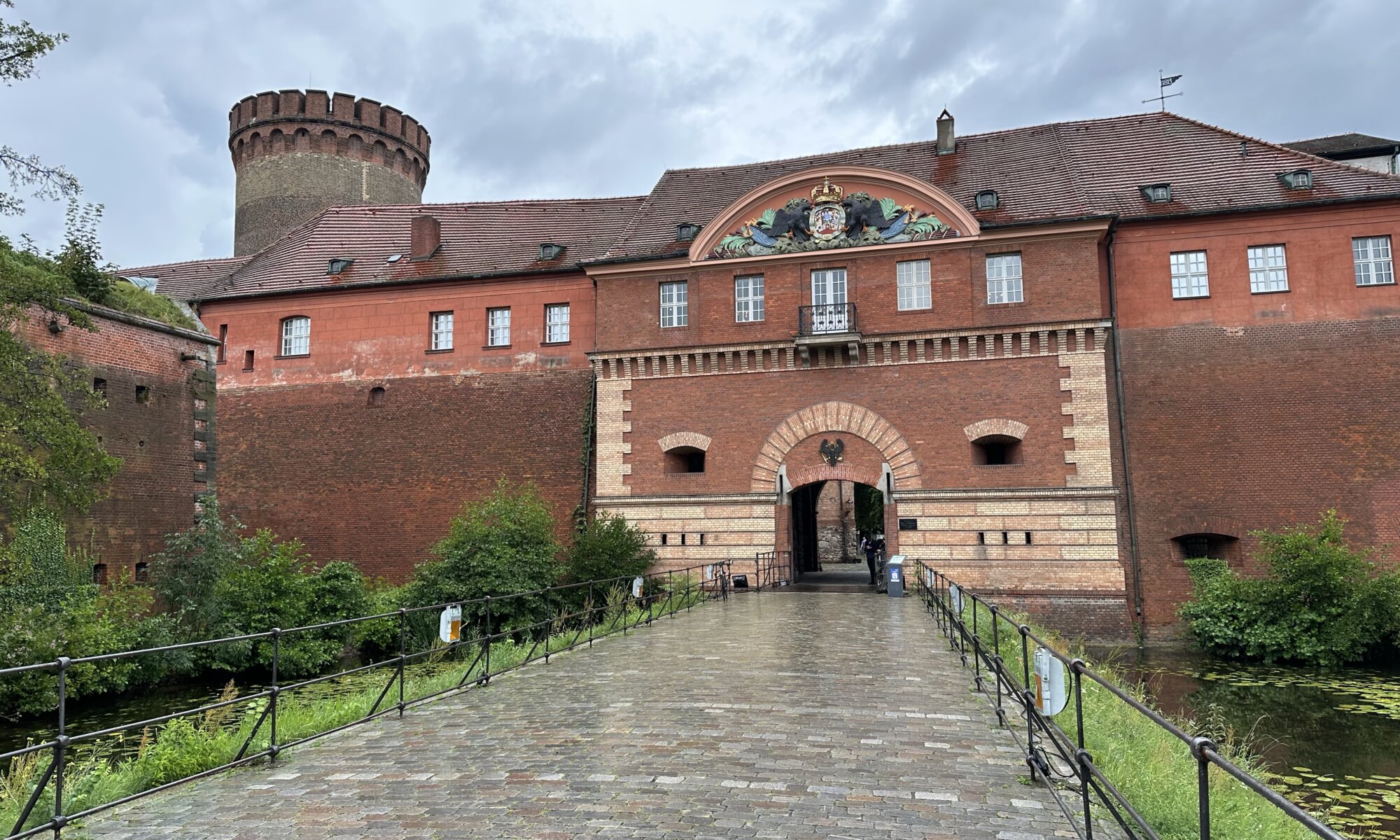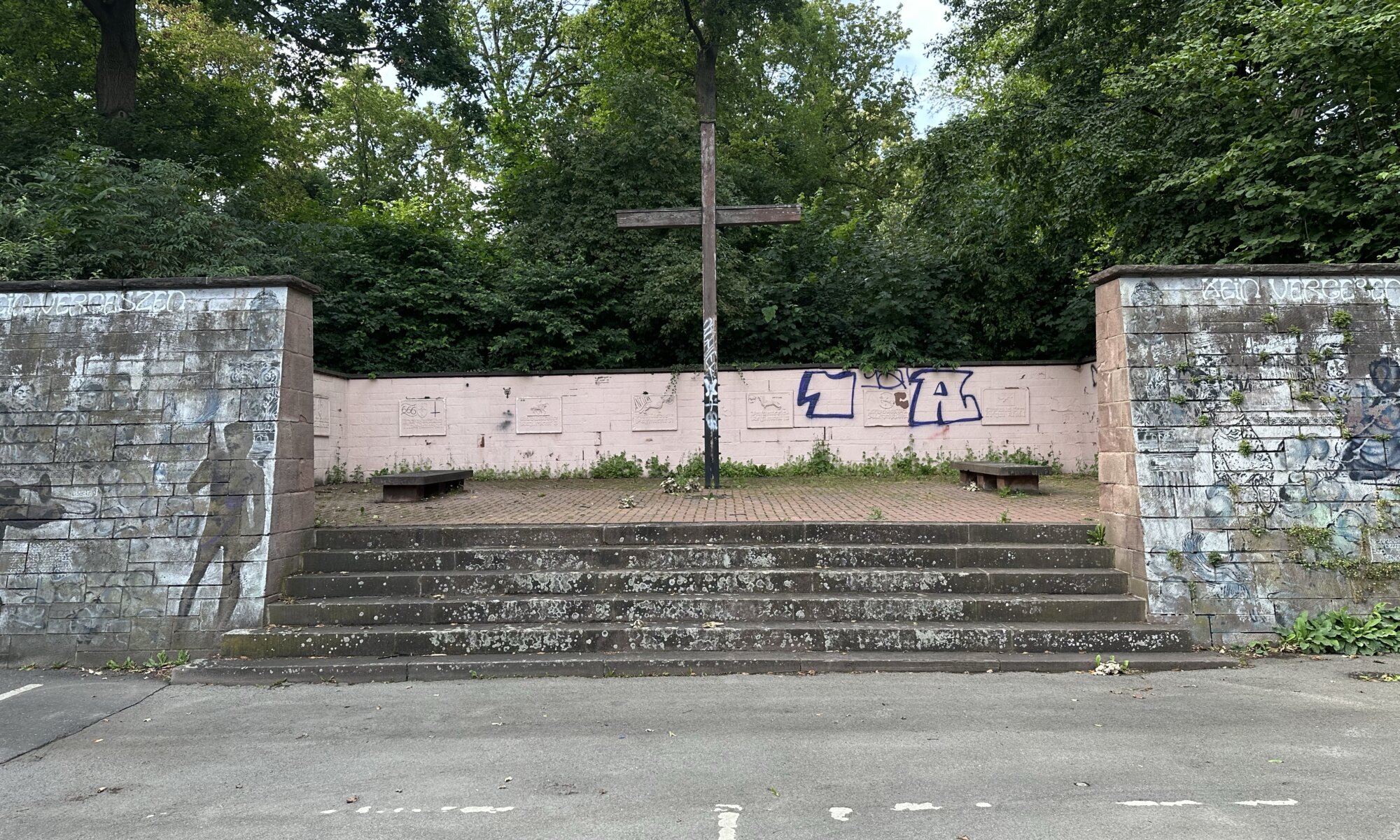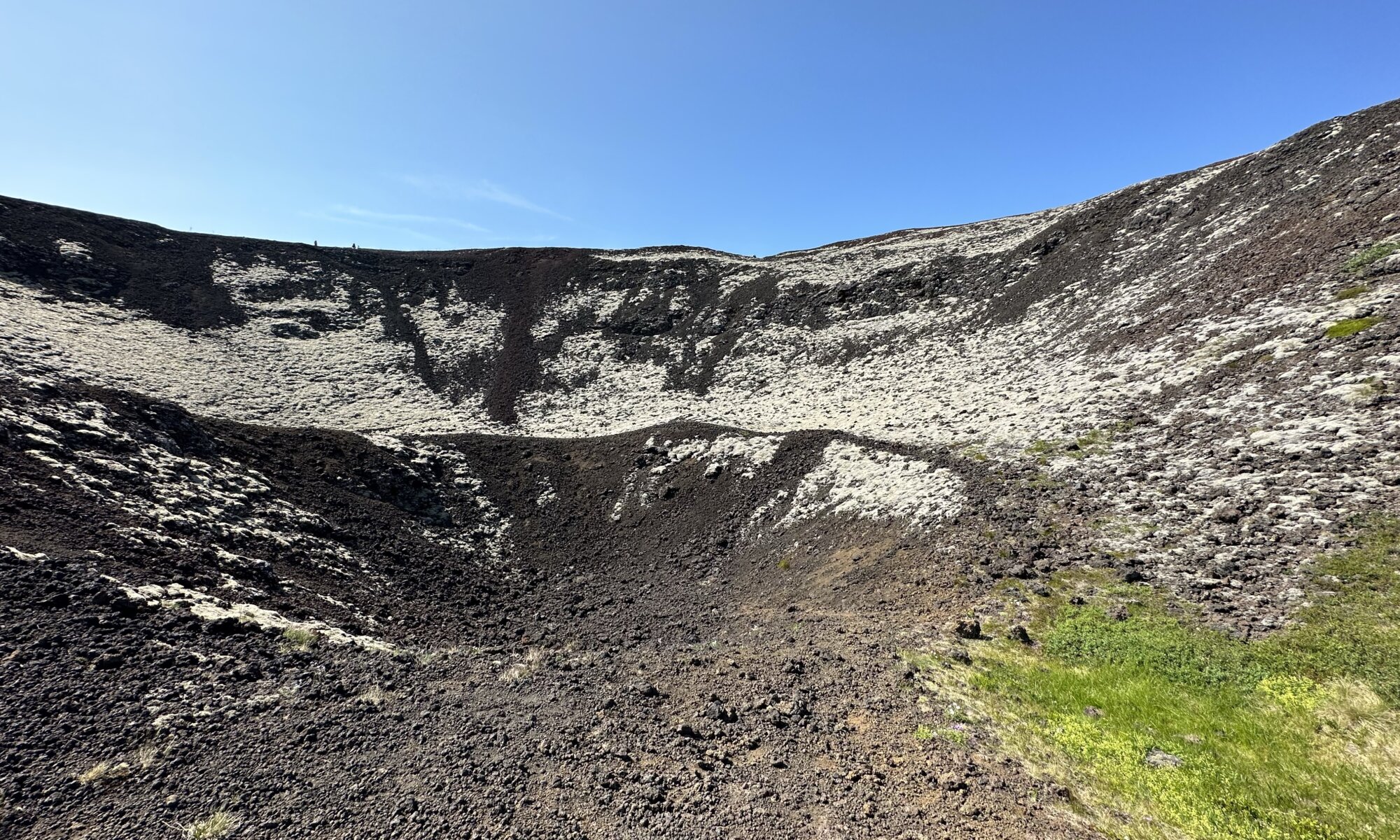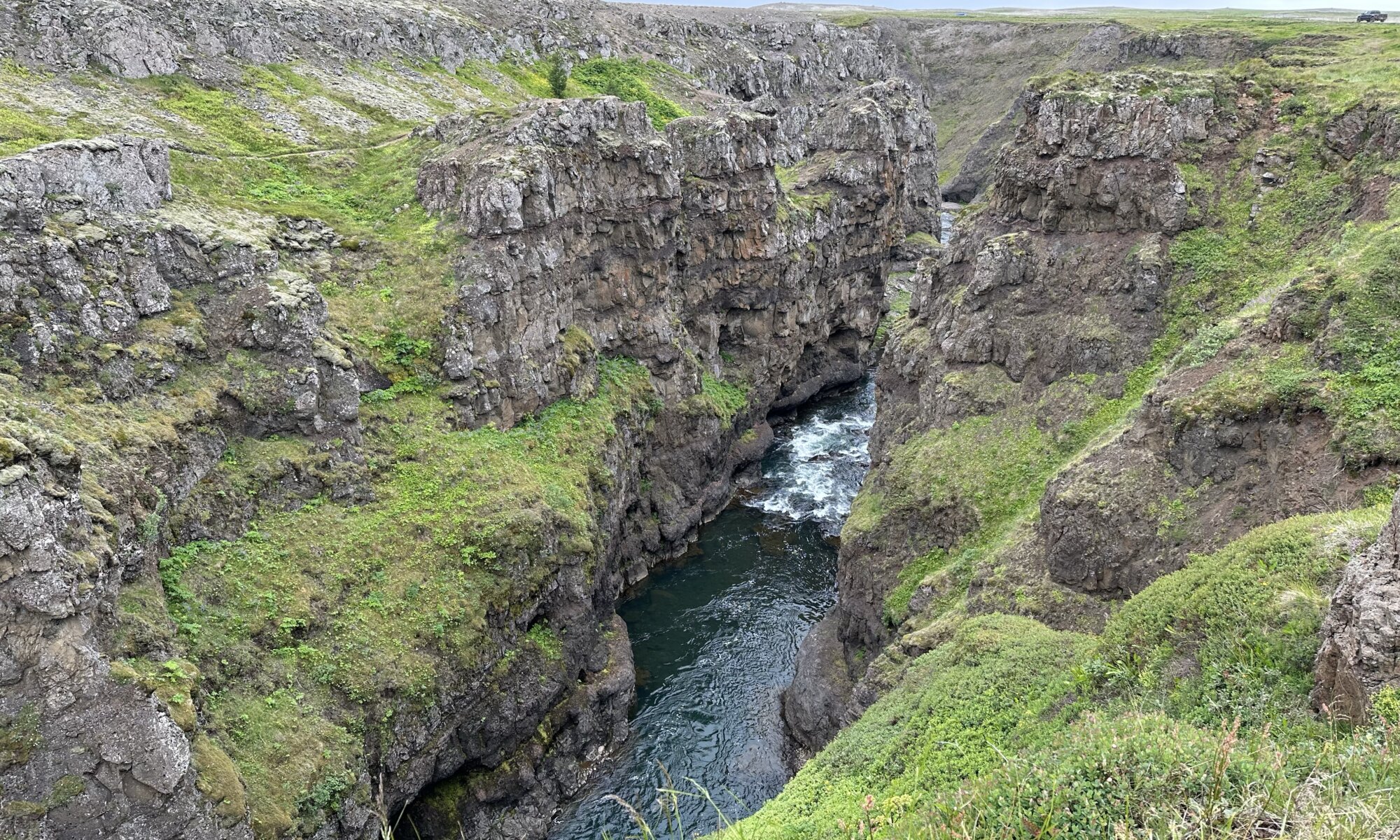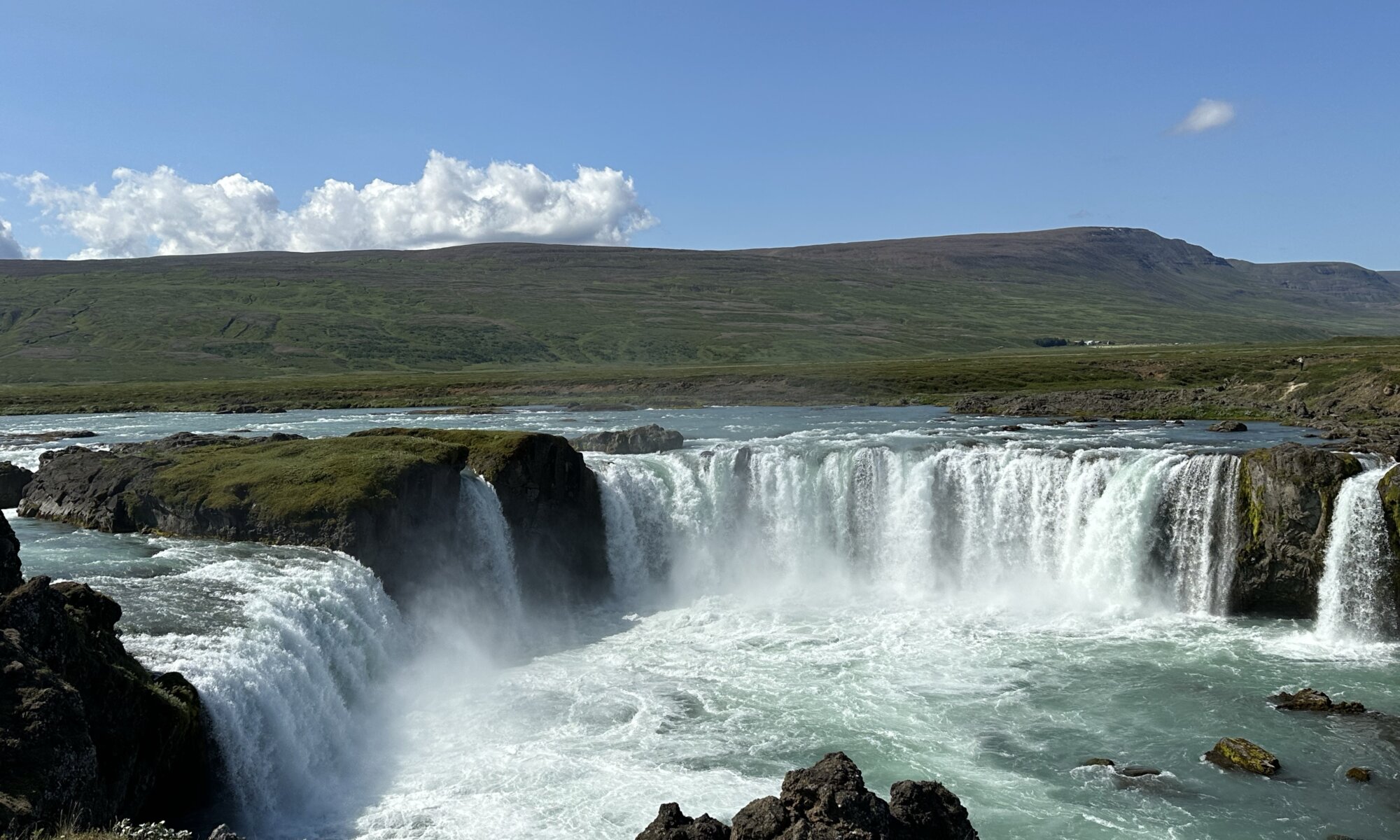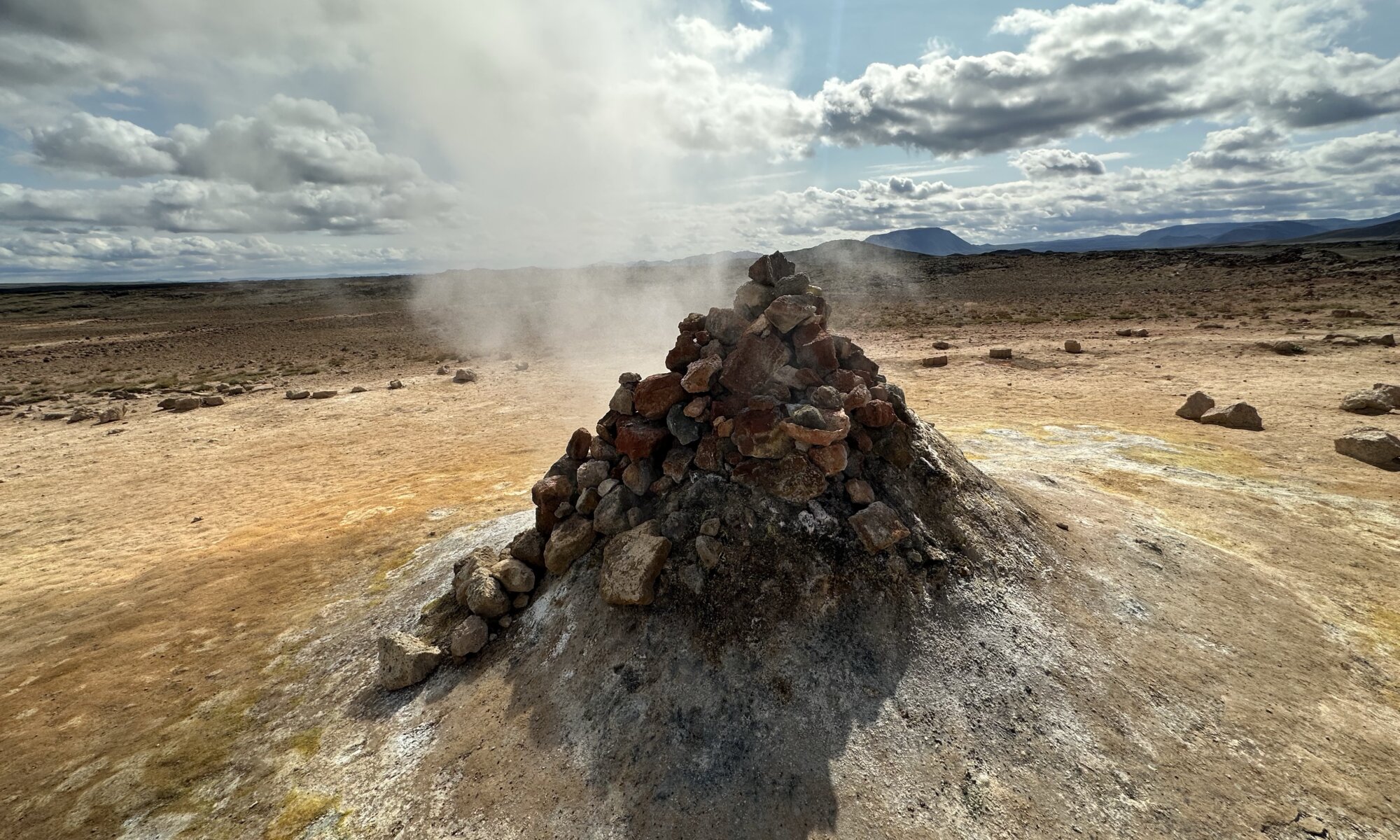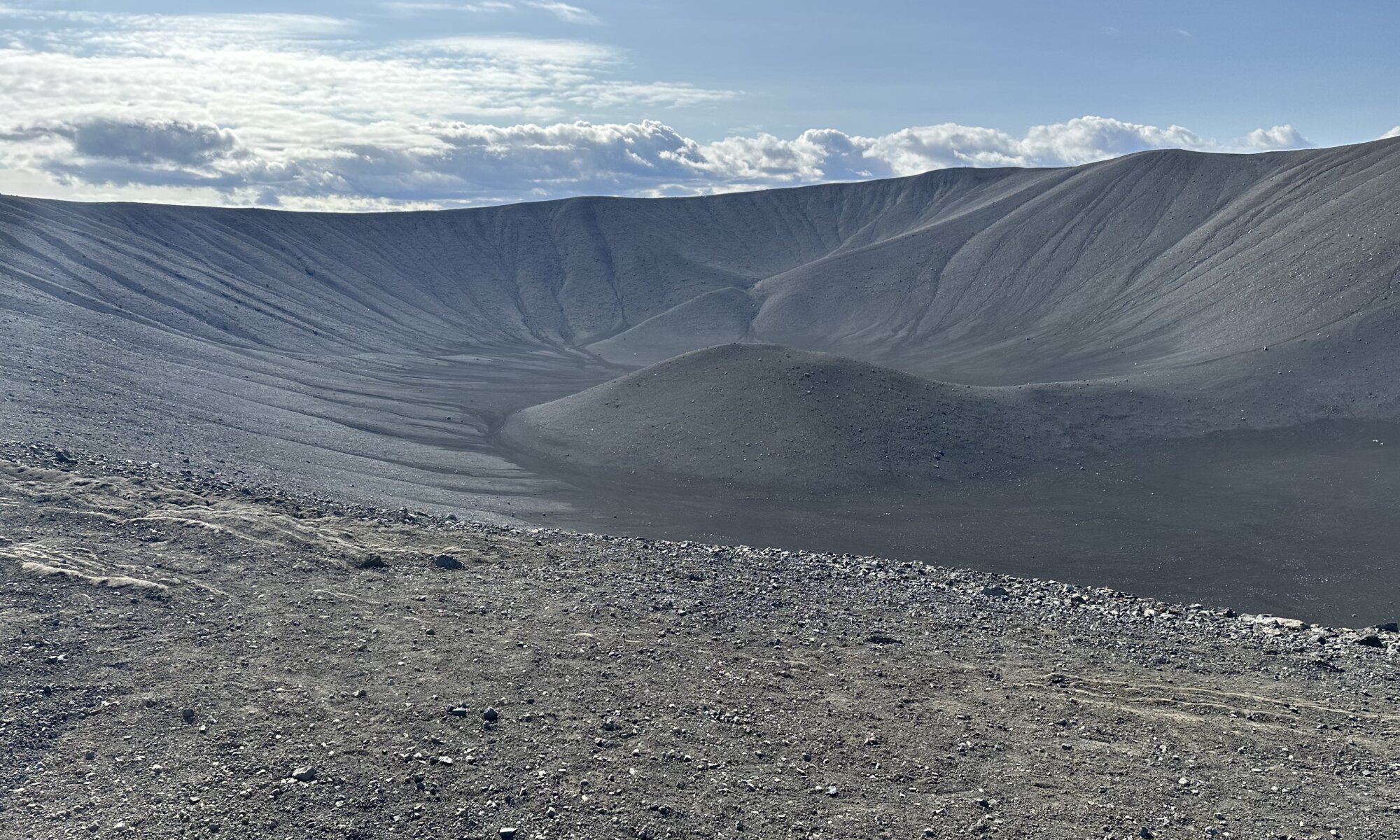The Kreuzberg is with 66 meters height the highest elevation of Berlin. Since the 15th century this ‘mountain’ was used to grow wine grapes. Today it is covered by a nice park that many Berliner use for a walk. On its top you’ll find the Prussian National Monument for the Liberation Wars – it was erected in 1821 after the victory against Napoleon Bonaparte in 1815. Initially it was planned to create a vast church in Gothic-style to commemorate this, but it was to costly.
Continue reading “Viktoriapark”Flakturm Humboldthain
The Volkspark Humboldthain is a beautiful garden in the north of Berlin. Construction works started in 1869 at the 100. anniversary of the birth of Alexander von Humboldt. It includes a nice rose garden and since 1942 a massive amount of concrete: with the use of forced labor a high-rise bunker with an anti-aircraft warfare position was built, the Flakturm Humboldthain. Flak is an abbreviation for Flugabwehrkanone meaning anti-aircraft gun.
Continue reading “Flakturm Humboldthain”Zitadelle Spandau
Everyone who has ever travelled by highspeed train to Berlin knows Spandau: It is the last stop before you reach Berlin Hauptbahnhof. Not too many tourists leave the train there, but there would be a good reason: the city has one of the oldest fortresses of the high renaissance period, the Zitadelle Spandau. It is located in the northeast of the historic city center within river Havel.
Continue reading “Zitadelle Spandau”Rosengarten
The Rosengarten (rose garden) of Göttingen is a forgotten place close to the new town hall building and the city center, just behind the Wallanlagen. Some people might walk from the Cheltenhampark via the Albanifriedhof to the Rosengarten and discover lots of beautiful roses there – but it is typically not a place you’re visiting on purpose. Younger citizens might remember that school’s out parties where once celebrated there, others might have been at this place because it is the schoolyard of the Bonifatiusschule.
Continue reading “Rosengarten”Glanni
Ready for a last waterfall before returning to the capital city of Iceland? The Glanni is a smaller waterfall close to Bifröst. After leaving the ring road you’ll discover a parking area and a short walk will bring you to a viewing platform close to the waters. If you don’t only want to look from up above a tiny path leads you through the forest down to the water.
Continue reading “Glanni”Volcano climbing
Shortly before reaching the village Bifröst on the ring road of Iceland you’ll see the high Grábrók crater next to the road. It is an excellent opportunity for a rest as the former volcano is part of a nature protection zone and nice wooden steps lead you up into the crater. Well, it is a bit painful but it looks more horrible than it really is – and the views on the area are beautiful from up there.
Continue reading “Volcano climbing”Kolugljúfur
The northwest of Iceland is a region with only a few touristic sights. Between Akureyri and Reykjavík you normally drive long passages without many stops. A good opportunity for a rest and maybe a picnic is the Kolugljúfur canyon. It only needs a short detour from the ring road on road 715. There the Víðidalsá river is running through a deep canyon and the Efrifoss waterfall (which is part of the Kolufossar) sends its waters into the deep.
Continue reading “Kolugljúfur”Goðafoss
The waterfall of the gods can be found half way between Laugar and Akureyri, the capital of the north. Goðafoss carries this name because after Iceland adopted Christianity in 1,000 CE images of the old gods were dropped here. Today it is mostly a beautiful and wide waterfall (12 meters high) which you can view from both sides. There are steps leading you down to the water as well as a viewing platform on top.
Continue reading “Goðafoss”Gates of Hell
In close vicinity to the Mývatn lake you can easily spot the geothermal area. If you hope that the steam coming out of the earth is a geyser you will be disappointed: it is an electric power point creating electricity from geothermic energy. There is also a natural spa making use of the power of the earth, but the real star is behind the mountain: an area full of bubbling mud and sulfur smokers in a moon-like environment.
Continue reading “Gates of Hell”Steep ascent
Ready for some sports? Near the Mývatn lake you will see a former black volcano, the Hverfjall. It is 452 meters high and has a fantastic clear geometry. It was created by an eruption series 2,500 years ago but also later smaller eruptions happened inside the old structures. How to get up? Well, there is a path leading straight up into the caldera. It is very, very steep and hiking up on volcanic ash is quite painful – but the views from the top are fantastic.
Continue reading “Steep ascent”